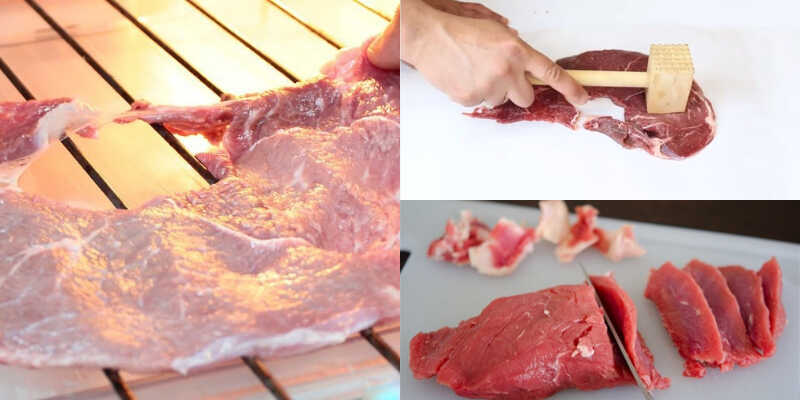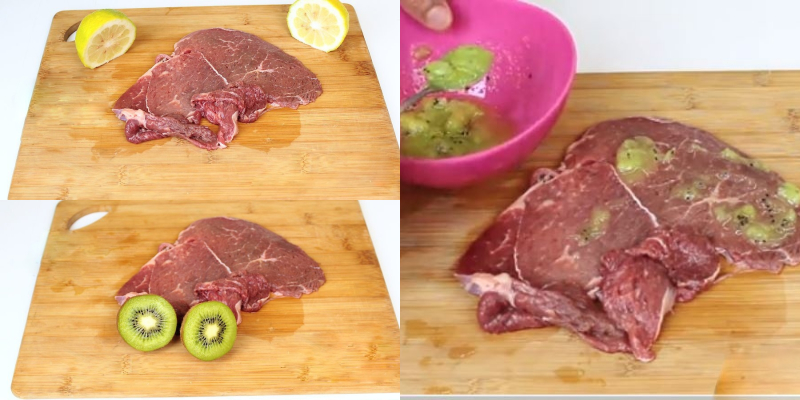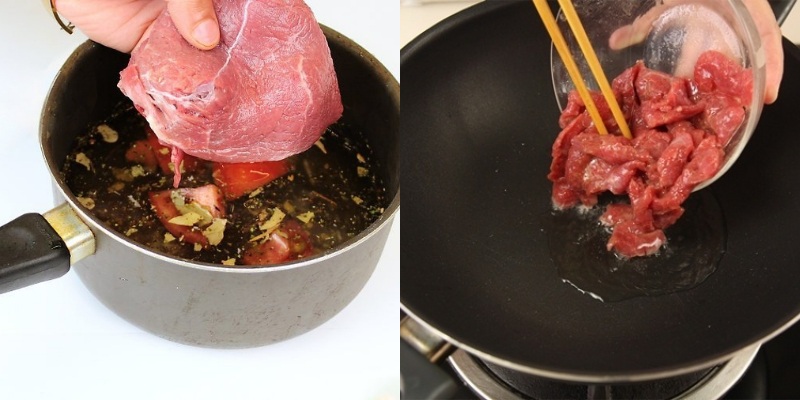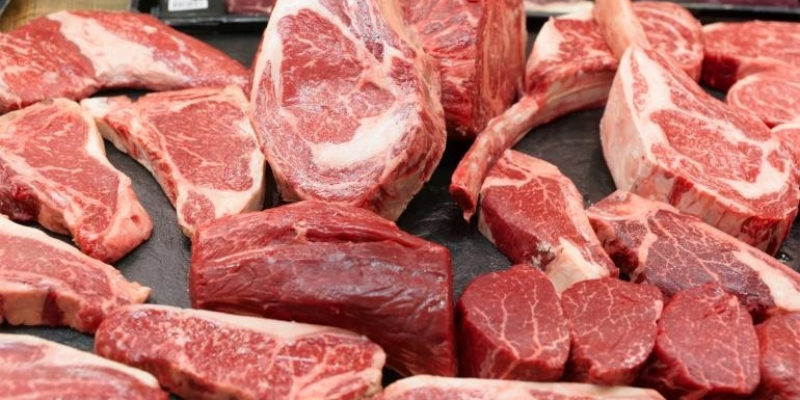Meat Preparation
The muscle fibers in meat form tough bundles that can be quite chewy if cut with the grain. Ensure the meat is cut across the grain to make it more tender and easier to chew. This way, you can also easily spot and remove tough white tendons.
Use a meat mallet to pound the meat and break down the muscle fibers, further tenderizing it.
Place the meat on a rack in the refrigerator. The cool, dry air circulating in the fridge will help dry out the meat’s surface, resulting in a more tender texture.

Marinating
Before marinating, treat the beef with acidic ingredients such as lemon, vinegar, kiwi, or pineapple. The acid content in these foods helps break down the muscle fibers, making the meat more tender.
For an overnight marinade, use mustard powder or add a tightly tied bag of white wine or vinegar to the pot while cooking. This will slowly break down the meat’s muscle fibers, making it less tough and more receptive to absorbing flavors during cooking.

Cooking Methods
The cooking time for beef varies depending on the dish you’re preparing.
+ For stews and braises: Older, tougher beef benefits from a 6-8 hour rub-down and a thorough cleaning before cooking. The longer it cooks, the more tender it becomes.
+ For stir-fries: Mix sodium carbonate and meat for a few minutes, then rinse and season for about 20 minutes. Cook over high heat, stirring constantly.
+ For dishes with broth or water: Wait for the liquid to boil before adding the meat. This ensures the meat stays tender and retains its natural sweetness.

Choosing the Right Cut for Each Dish
Even with older, tougher beef, selecting the right cut for each dish is essential, as cooking time and methods can affect the meat’s flavor and texture.
+ Stir-fries: For the best results, choose tender cuts like filet or sirloin. These cuts allow for even seasoning, and quick cooking over high heat without becoming tough.
+ Stews: Cuts with connective tissue, like shank, oxtail, or thigh, remain moist and tender even after extended cooking times, rather than drying out or becoming fibrous.
+ Soups: For a well-rounded flavor, choose cuts with a mix of lean meat and fat, like beef brisket. The fat in the brisket keeps the soup tasty and rich.

With these simple techniques for preparing, marinating, and cooking beef, you can transform even the toughest cut into a delicious, tender meal. Take note of these tips to ensure your beef dishes always turn out mouthwateringly tender.
For more information, see: wikihow.com, giadinh.vnexpress.net
Avoid These 7 Critical Mistakes When Grilling Pork
It is possible to grill pork to perfection if the right steps are followed. Key actions to take include selecting the correct type of pork, cutting it into suitable portions, marinating it, browning it, and avoiding overcooking. These tips and more will help ensure the flavor and tenderness of the grilled pork are just right.
Revealing the Secrets of Delicious Cooking by a Professional Chef
Are you looking to become the master chef of your home kitchen? Ði?n máy XANH is here to help with their tips on how to serve up restaurant-level dishes, from proper cooking methods for meat and grilling, to baking delicious cakes. So pick up your apron and get ready to show off your culinary prowess!














